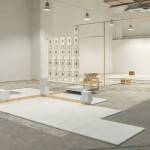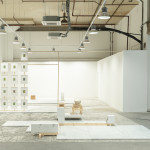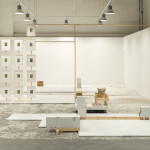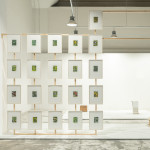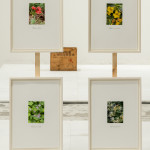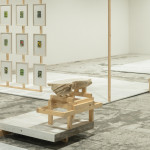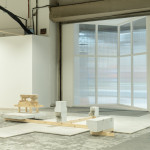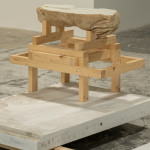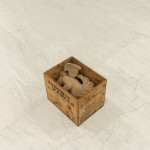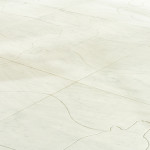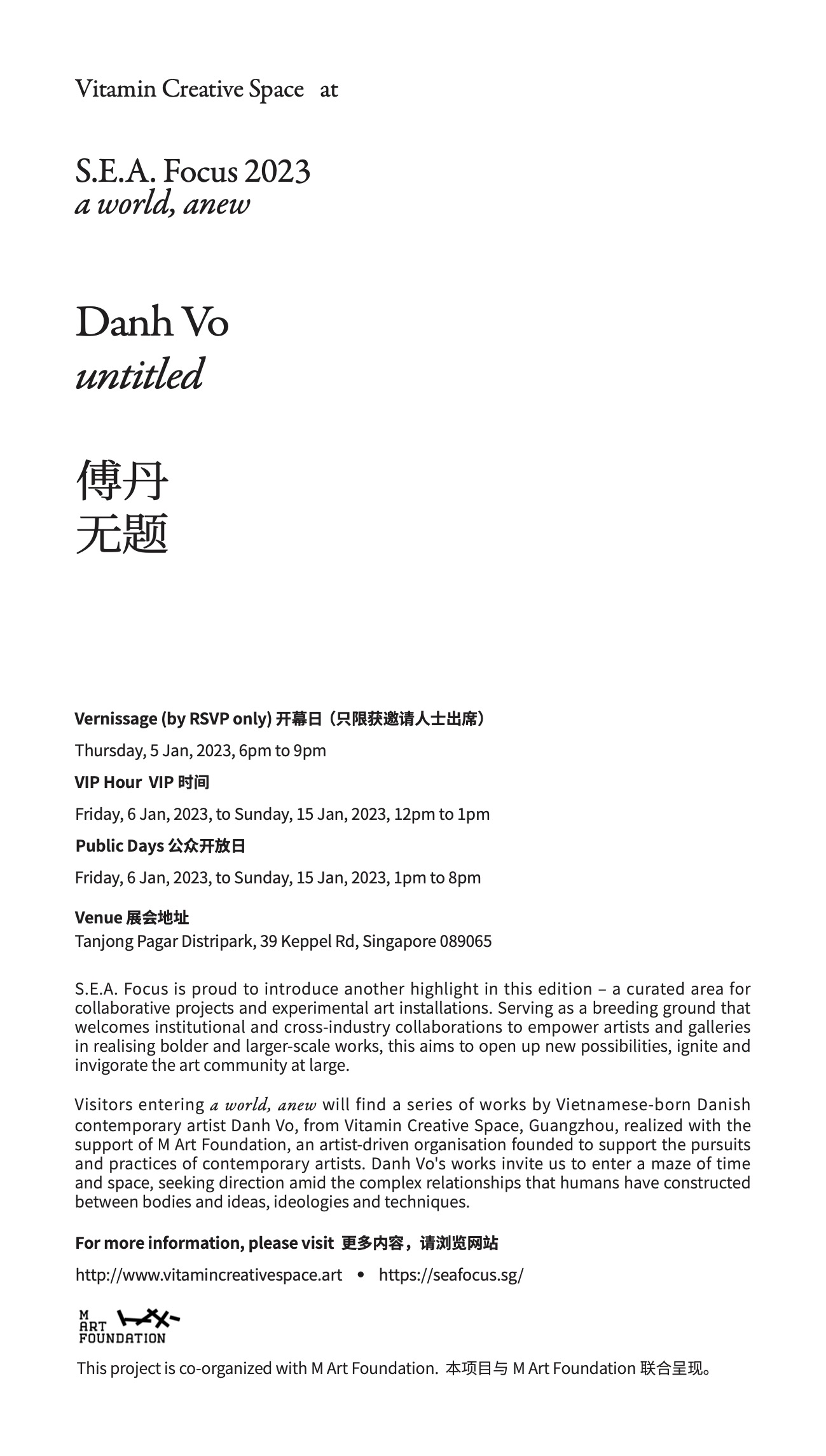
Untitled (On Non-monumentality)
The ancients did not see forward and
Those to come will not see the past.
I think on heaven, and earth, and the vastness of time,
And I shed tears of sorrow and solitude.
——“Ascending the Youzhou Tower,” Chen Zi’ang (Tang Dynasty)
I think what has always comforted me beyond all that is that you can think in geological time…that’s why I think stones or rocks are such a fantastic material. It’s geological time, it’s beyond ourselves, so I can only look at it aesthetically, which is comforting.
——Danh Vo
1. The “geological time” mentioned above by Danh Vo strikes a resonance across the centuries with this verse by the Tang poet Chen Zi’ang (661-702): “Heaven, and earth, and the vastness of time.” Each artist casts aside the cultural particulars of their era, invoking instead a certain universal human musing on the scope of time. Their musings lead one to consider how the reciprocal reflections between the span of a fragile human life and the far greater scale of cosmic time can provoke feelings of both sorrow and relief, approaching the subtle realm of Master Hong Yi (1880-1942)’s words, “joy and sadness mingle together.”
2. A small boat rides the rushing river’s current. The people on board and the stones standing upright along the banks gaze at each other across the water. These are the Red Cliffs, a legendary battlefield of the Three Kingdoms era, as recalled by the Northern Song poet Su Shi (1037-1101) in “First Ode on the Red Cliffs”:
We ride our small boat, drinking from our simple cups of gourd. We are no more than mayflies wandering this terrestrial world, or grains of millet drifting on the deep ocean.
“As soon as we engage in any ontological reflection on the environment around us, the metaphor of a boat [craft] inevitably arises,” points out John Durham Peters in The Marvelous Clouds – Toward a Philosophy of Elemental Media. Peters reminds us that the boat is a long-standing metaphor for the state of human existence that represents the capacity of humanity to survive diverse dangerous environments through the use of the technologies we’ve developed. “Aboard the craft, technology represents our ontological understanding, whereas art allows us to recreate nature.”
As I see it, in the moment that the people on the boat gaze upon the cliffs along the shore, the possibility emerges for them to engage in comprehensive reflection on the total state of humanity.
3. Our explorations of “geological time” and “Heaven, and earth, and the vastness of time” seem to take on the quality of a journey back to our source. When we examine the origins of things and the state of humanity, there is an implied possibility of entering a recursive cycle: an explanation for an explanation, the circumstances of a circumstance. In other words, this search can be an endless one: behind every circumstance lies another, and the chain of causality has no origin or terminus.
4. Like a ferryman (passeur) traverses the river of time, Danh Vo seems to continuously salvage objects from the water, assembling a collection of “untitled ruins.” The river conceals both vestiges of nature itself and the traces of human activity. In this sense, the “untitled” site becomes an intersection where human time meets the time-scale of the planet, a common space where the value of life can be pondered and questioned, inviting us to see this cathartic contemplation as an opportunity for awareness.
5. Another “ruin”: an edifice stretching toward the sky—the incomplete grand plans of humankind—forming instead an open space where weeds grow and people migrate back and forth. In this space, all exhausted aspirations and desires can be accepted.
Film still from “Nostalgia” by Andrei Tarkovsky, 1983
We must not forget that we are humans, we are merely creations. We are given spiritual inspiration, but we are only creations. For, in the next life, all things will have a single source, and everything will be built from the same material. – Andrei Tarkovsky
6. The materials of Danh Vo’s work are not symbols and signifiers. They are not attempts to explain time or imitate human activity within time. As I see it, Danh Vo keenly captures the materials themselves, as if they were evidence of accumulated states of consciousness over time. The artworks are always arriving in the inevitable moment of crystallized interactions between materials and the limitless possibilities they contain. They become “sites” that are difficult to name, sites that invite us, as members of humankind, to go deeply within. In the endless journey of retracing the path to our source, the scope of humanity’s timespan is unfurled, and the true conditions of human freedom are revealed.
7. If gazing up at the sky offers humankind a sense of consolation that is just as important as walking across the earth, then here, in these “untitled” sites, Danh Vo renounces walls and returns to the earth’s surface in order to interrogate and release the potentiality of sculpture. Non-monumentality can be a method of portraying the intrinsic value of humankind, for all of the earth’s grand edifices stretch toward the skies, but in the end, it is their destiny to return to the earth.
(Hu Fang)
____
untitled
——a brief introduction
Danh Vo’s life’s journey has given him a broad range of experiences to draw on as he examines questions of significance and purpose. In the process, the artist has continuously explored how the practice of contemporary art can elucidate the relationship between art and life.
I always say that I can deal with my life and the circumstances of my life, the political, social circumstances of my life at this moment. And, it’s true. I can look at it through the history that has impacted me, like the Vietnam War, or the American War of Independence or whatever. But I think what has always comforted me beyond all that is that you can think in geological time. It comforts me because then you always think, “OK, everything is going to disappear anyhow.” And that’s why I think stones or rocks are such a fantastic material. It’s geological time, it’s beyond ourselves, so I can only look at it aesthetically, which is comforting.[1]
In this recent interview, Danh Vo discusses his interest in the notion of “geological time,” in contrast to the scale of biological time on which we humans live. The contrast between these two concepts of time provides us with an entry point for this project. Three works featured here—untitled (2021), Untitled (2020), and Untitled (2012-2022)—together hint at the relationship between ideology, craft, and the changes over time in art mediums. They represent a richly significant journey through time, from the Roman Empire to the nineteenth and twentieth centuries—the rise of “Modernity”—and on to the present.
The forms of these objects and their particular materiality derive from the combination of the collective consciousness of different periods of time and the changes in techniques that took place amid them. Ideological evolution (from ancient Roman religion, Christianity, and humanism to colonialism and capitalism) is deeply imbedded in the formal characteristics of these sculptures. Intriguingly, over the course of two millennia, the materials available to artists have grown evermore light, from marble to wood to inexpensive cardboard. Thus do we enter into a labyrinth of time and space, seeking direction amid the complex relationships that humans have constructed between bodies and ideas, ideologies and techniques.
In The Protestant Ethic and The Spirit of Capitalism (1904-1905), the theorist Max Weber posited a tight, nuanced web of connections between the evolving spirit of modern Western Capitalism and the reform and evolution of religion. In the essay “Capitalism as Religion” (1921), Walter Benjamin pointed out that “one can behold in capitalism a religion, that is to say, capitalism essentially serves to satisfy the same worries, anguish, and disquiet formerly answered by so-called religion.” In Untitled (2020), we see how belief gradually merges into commodity fetishism. Following the emergence of international maritime shipping, containers like these wooden Johnnie Walker whiskey boxes have become increasingly important, and the religious concept lives on only in a quaint representation of the leftover body of an angel compressed in the box. The artwork thus reflects a moment of historical transition: human bodies are released from their role as instruments of religion, instead becoming targets of commodification. Such commodification of human life is an ever more ubiquitous phenomenon; the natural resources that support human life are a salient example of this process, as captured by the sculpture Untitled (2012-2022).
To Danh Vo, the most shareable public space is in fact located within each individual’s physical body. When these three sculptures are considered together, Danh Vo’s artistic practice draws us in with powerful momentum, forming an expanding field and a distinctive public space that invites us to contemplate, confront, and explore the hidden dimensions of our lives. If each unique individual is able to grasp some of the various aspects of this invitation, then we are all able to glimpse the artist’s distinctive vision of the meaning of freedom.
Courtesy of Vitamin Creative Space
[1] “Cathedral and Storage: Danh Vo in conversation with Maria Inés Rodriguez” in Rodriguez, Maria Inés, and Danh Vo, ed. Danh Vo. Bordeaux: CAPC musée d’art contemporain de Bordeaux, 2018.
____
Vitamin Creative Space at S.E.A. Focus 2023: a world, anew
Danh Vo: untitled
Vernissage (by invitation only)
Thursday, 5 Jan, 2023, 6pm to 9pm
VIP Hour
Friday, 6 Jan, 2023, to Sunday, 15 Jan, 2023, 12pm to 1pm
Public Days
Friday, 6 Jan, 2023, to Sunday, 15 Jan, 2023, 1pm to 8pm
Venue
Tanjong Pagar Distripark, 39 Keppel Rd, Singapore 089065
S.E.A. Focus is proud to introduce another highlight in this edition – a curated area for collaborative projects and experimental art installations. Serving as a breeding ground that welcomes institutional and cross-industry collaborations to empower artists and galleries in realising bolder and larger-scale works, this aims to open up new possibilities, ignite and invigorate the art community at large.
Visitors entering a world, anew will find a series of works by Vietnamese-born Danish contemporary artist Danh Vo, from Vitamin Creative Space, Guangzhou, realized with the support of M Art Foundation, an artist-driven organisation founded to support the pursuits and practices of contemporary artists. Danh Vo’s works invite us to enter a maze of time and space, seeking direction amid the complex o’s works invite us to enter a maze of time and space, seeking direction amid the complex relationships that humans have constructed between bodies and ideas, ideologies and techniques.
For more information, please visit
https://seafocus.sg/
This project is co-organized with M Art Foundation.
[ About the Artist ] >>
- Exhibition view of Danh Vo: untitled in “S.E.A. Focus 2023: a world, anew”, Singapore, 2023. Photographer: JONATHANTYL.Courtesy of the artist and Vitamin Creative Space. © Vitamin, 2023. All works of art by Danh Vo are © the Artist, 2023
- Exhibition view of Danh Vo: untitled in “S.E.A. Focus 2023: a world, anew”, Singapore, 2023. Photographer: JONATHANTYL.Courtesy of the artist and Vitamin Creative Space. © Vitamin, 2023. All works of art by Danh Vo are © the Artist, 2023
- Exhibition view of Danh Vo: untitled in “S.E.A. Focus 2023: a world, anew”, Singapore, 2023. Photographer: JONATHANTYL.Courtesy of the artist and Vitamin Creative Space. © Vitamin, 2023. All works of art by Danh Vo are © the Artist, 2023
- Exhibition view of Danh Vo: untitled in “S.E.A. Focus 2023: a world, anew”, Singapore, 2023. Photographer: JONATHANTYL.Courtesy of the artist and Vitamin Creative Space. © Vitamin, 2023. All works of art by Danh Vo are © the Artist, 2023
- Exhibition view of Danh Vo: untitled in “S.E.A. Focus 2023: a world, anew”, Singapore, 2023. Photographer: JONATHANTYL.Courtesy of the artist and Vitamin Creative Space. © Vitamin, 2023. All works of art by Danh Vo are © the Artist, 2023
- Exhibition view of Danh Vo: untitled in “S.E.A. Focus 2023: a world, anew”, Singapore, 2023. Photographer: JONATHANTYL.Courtesy of the artist and Vitamin Creative Space. © Vitamin, 2023. All works of art by Danh Vo are © the Artist, 2023
- Exhibition view of Danh Vo: untitled in “S.E.A. Focus 2023: a world, anew”, Singapore, 2023. Photographer: JONATHANTYL.Courtesy of the artist and Vitamin Creative Space. © Vitamin, 2023. All works of art by Danh Vo are © the Artist, 2023
- Exhibition view of Danh Vo: untitled in “S.E.A. Focus 2023: a world, anew”, Singapore, 2023. Photographer: JONATHANTYL.Courtesy of the artist and Vitamin Creative Space. © Vitamin, 2023. All works of art by Danh Vo are © the Artist, 2023
- Exhibition view of Danh Vo: untitled in “S.E.A. Focus 2023: a world, anew”, Singapore, 2023. Photographer: JONATHANTYL.Courtesy of the artist and Vitamin Creative Space. © Vitamin, 2023. All works of art by Danh Vo are © the Artist, 2023
- Exhibition view of Danh Vo: untitled in “S.E.A. Focus 2023: a world, anew”, Singapore, 2023. Photographer: JONATHANTYL.Courtesy of the artist and Vitamin Creative Space. © Vitamin, 2023. All works of art by Danh Vo are © the Artist, 2023
Exhibition view of Danh Vo: untitled in “S.E.A. Focus 2023: a world, anew”, Singapore, 2023. Photographer: JONATHANTYL.
Courtesy of the artist and Vitamin Creative Space. © Vitamin, 2023.
All works of art by Danh Vo are © the Artist, 2023.
